Write Us
We are just a call away
[ LET’S TALK AI ]
X
Discover AI-
Powered Solutions
Get ready to explore cutting-edge AI technologies that can transform your workflow!

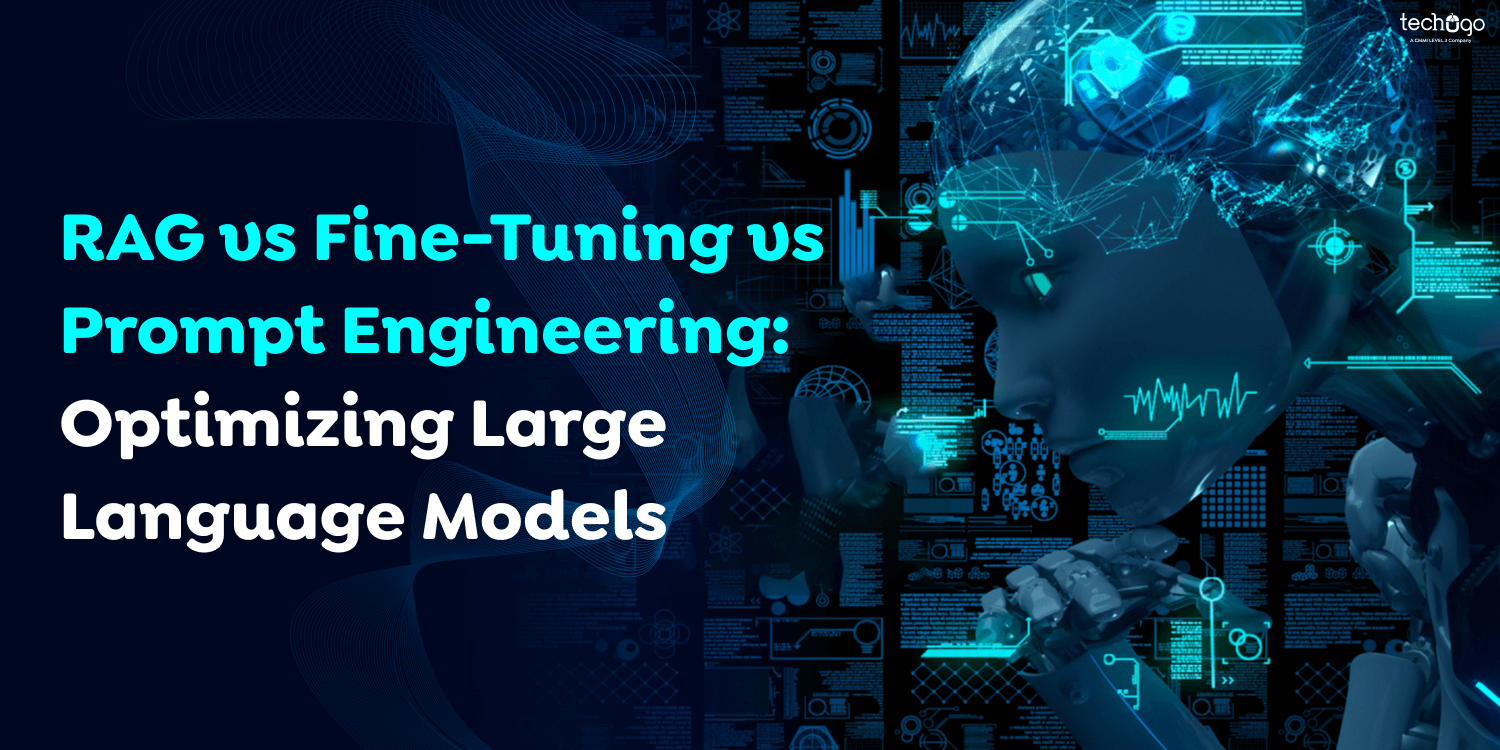
Large Language Models, or LLMs, have revolutionized our interaction with the latest technology. They power everything from chatbots and chatbots to content generation tools. However, these models often struggle with domain-specific prompts or any new information not contained in their data for training.
But, despite their tremendous potential to your business, even the strongest already trained LLMs might need help to meet the needs of your particular situation right from the beginning. So, it’s essential to implement strategies that allow LLMs to focus on specific areas and jobs, making them more effective in efficiency, precision, and adaptability.
How can we improve these models to be more flexible? We can do this by introducing Retrieval-Augmented Generating (RAG) and the fine-tuning process. Both can be beneficial, but they operate quite differently. Each has distinct benefits, but choosing the appropriate method ensures your model’s performance in specific situations.
As a top-rated mobile app development company in USA, we’ll examine the RAG process and fine-tuning techniques in depth. We will help you learn the basics of both methods, analyze their effectiveness under various circumstances, and determine which is better.
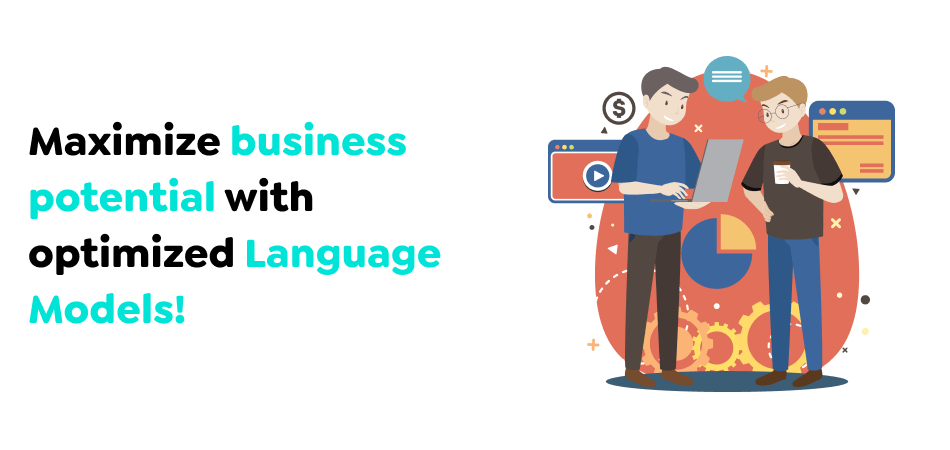
LLM optimization is crucial in your organization because of several factors. By optimizing a mobile app system, companies can improve processes, increase sustainability, and aid in specific usage scenarios. These are real-world instances where LLM optimization has proved advantageous for companies operating in the marketplace.
LLM optimization makes sure that computational resources are utilized more efficiently. The fine-tuning of a model to fit specific purposes can help reduce the computational energy required. For example, an LLM-based platform can be implemented to aid the financial information advisors of a company by presenting massive amounts of research data. It resulted in an increase of 30% in the time they spent researching, allowing advisors to focus more on client interaction and strategy creation.
Optimized LLMs will be able to more effectively comprehend and understand the context behind customers’ queries and interactions. Companies can offer pertinent and personalized solutions by tailoring models to meet particular customer preferences or needs and preferences. Bank of America’s virtual digital assistant has surpassed 2 billion transactions, showing extensive usage and efficiency in interacting with clients.
LLMs can assist brainstorming sessions with an array of ideas and viewpoints. They can also assist teams in exploring diverse scenarios, elements, and possible design options, simplifying the analysis and improvement of ideas. LLMs need to speed up their research process for identifying drugs.
Optimized LLMs can examine and monitor regulatory changes across different areas. They process massive amounts of legal documents along with updates and notifications to ensure that companies know about changes in compliance software requirements. HSBC has implemented an LLM-based solution to identify financial crimes. The system has been able to spot suspicious transactions and reduce losses due to fraud by 40% while maintaining regulatory compliance.
Also Read : How To Choose The Right Digital Transformation Framework For Your Business?
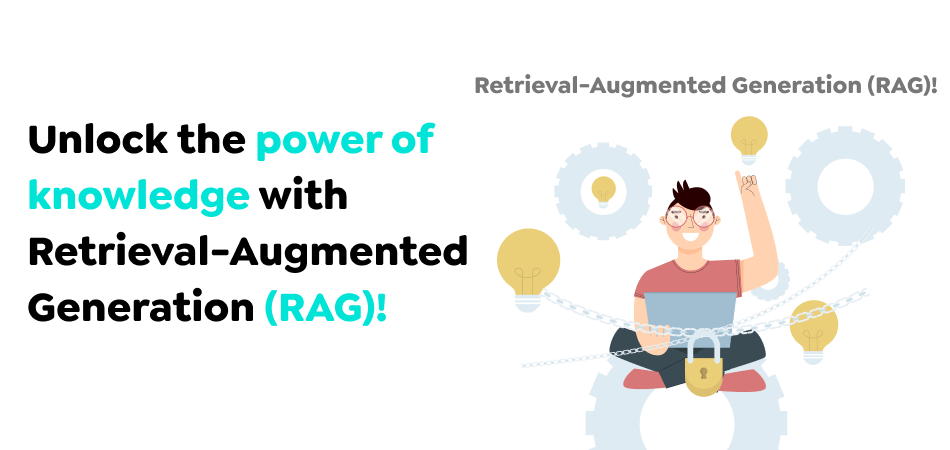
Retrieval Augmented Generation (RAG) can be described as an architectural framework developed by Meta in 2020. It connects your large-language model (LLM) to a carefully curated active database. The LLM’s outputs are improved because it can access and integrate up-to-date, reliable information into its replies and analysis.
RAG Development is a complicated procedure that doesn’t occur in a vacuum. It may include prompt development, vector databases such as Pinecone embedded vectors, embedding them into semantic layers, data modeling, data orchestration, and data pipelines designed specifically for RAG.
Here’s how RAG flow functions:
Therefore, establishing an RAG architecture can be difficult for the data team as it involves creating pipelines for data to serve the unique contextual data incorporated into the LLM. When done correctly, RAG can add a fantastic amount of value to AI-powered products for data.
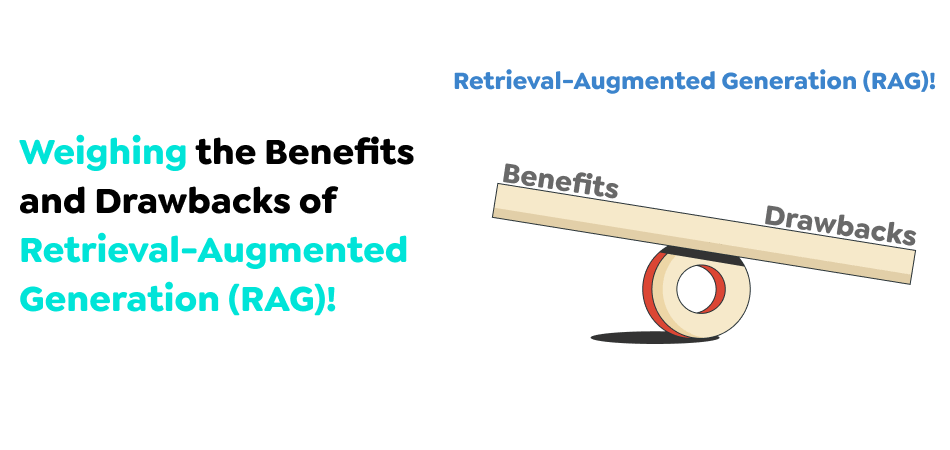
RAG have its own benefits and drawbacks, so quickly let’s have a look at them:
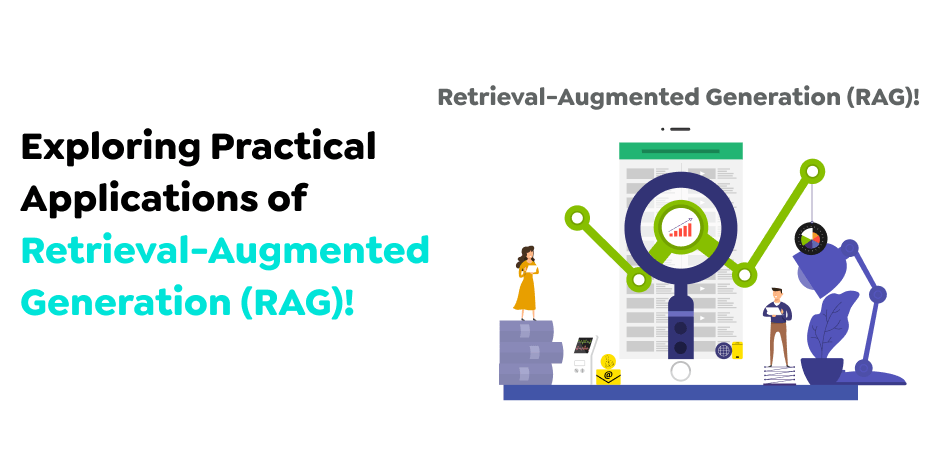
In general, the Retrieval Augmented Generation is useful in web applications that need LLMs to base their answers upon large volumes of information specific to the particular application’s requirements.
However, below are a selection of well-known RAG usage cases:
One of the most effective uses of RAG-powered systems is answering systems questions. Chatbots equipped with RAG capabilities collect pertinent data from an organization’s instructional manuals and technical documents to give detailed and contextual contextual awareness to customer questions. The systems typically enable companies to create informative and interactive conversations with customers.
The Retrieval Augmented Generation (RAG) improves language translation by considering the contextual element of an outside source’s knowledge base. This advanced method analyzes specific terminology and domain-specific knowledge, resulting in more precise language translations. This is especially useful for technical fields and specialization.
Implementing RAG within LLM learning has dramatically increased the number of educational tools accessible to students. Through this approach, learners can access clarifications, answers, and additional context on a variety of study resources. It helps to improve understanding and learning in educational apps.
RAG powers these systems and provides access to the most current medical records, including clinical guidelines and details not included in the LLM training database. In turn, the systems aid doctors in making more precise diagnoses and providing more effective treatment suggestions for their patients.
Today, lawyers worldwide have recourse to RAG models that can streamline reviewing legal documents and carry out effective legal frontier researcher. They can assist with analyzing, reviewing, and presenting a variety of legal documents, including documents, affidavits, contracts, statuses, and wills, within the fastest time.
This can greatly reduce the time and energy necessary for document review, allowing legal professionals to concentrate on other tasks. Utilizing the RAG system also improves the quality and efficiency of the reviewing processes.
Also Read : How to Hire a Full-Stack Developer in 2025: Best Platforms, Costs & Key Benefits
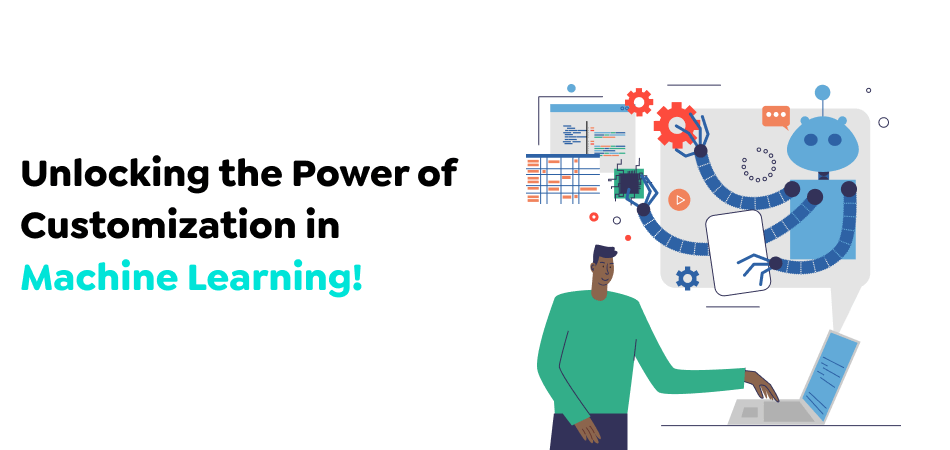
Fine-tuning is a different strategy for GenAI development. It requires training an LLM using a smaller, customized, labeled database and then adjusting the model’s parameters and embeddings in light of the latest information. The ultimate aim of RAG and fine-tuning for enterprise-ready AI and RAG is similar: generating more ROI for businesses from AI models.
Instead of enhancing the existing LLM using an internal database, fine-tuning takes it further by adjusting the model to fit a specific field. It involves training an LLM using a smaller, customized, labeled database and changing the model’s parameters and embeddings in light of the latest information. By aligning the model to the various terminologies and nuances of a specific field, fine-tuning can help the model excel at particular jobs.
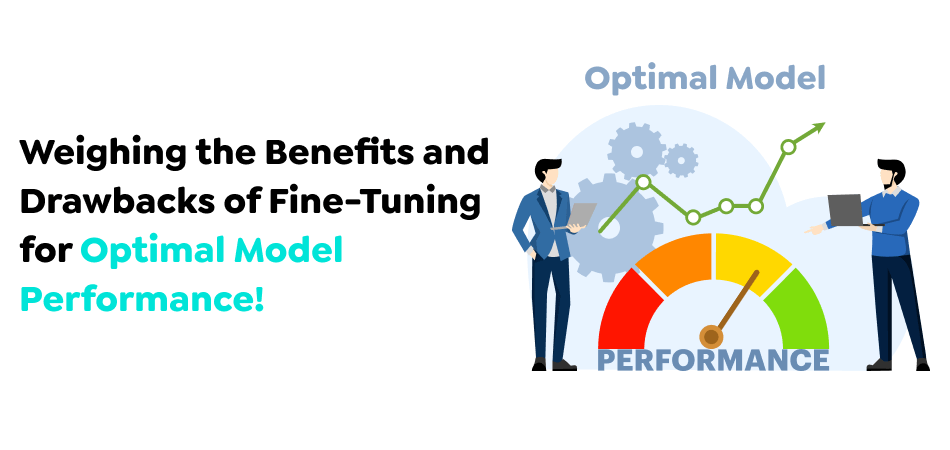
Fine-tuning has its advantages and disadvantages, so let’s have a look at them:
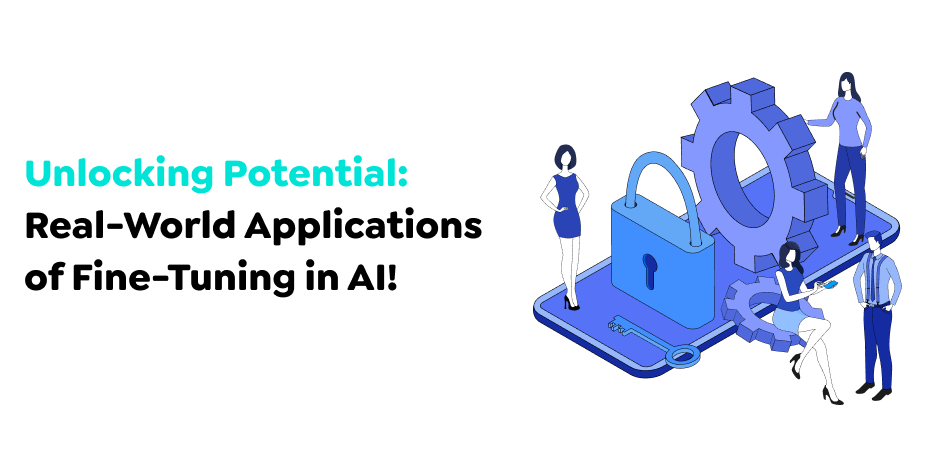
Large Language Models (LLMs) can be tuned for various applications. These include:
Though already-trained LLMs can understand human speech very well, they do not necessarily do an excellent job of understanding the tone or sentiment of a given text. The fine-tuning of an LLM will help increase its ability to determine the mood and attitude in the text.
It is possible that the LLM can offer the most exact data on sentiment from online reviews, customer service chat transcripts, and social media commentaries. Using accurate sentiment analysis, companies can make better, well-informed decisions on their services and products for better customer service.
An unspecified LLM will likely fail when confronted with unique vocabulary in a specific domain text. However, it is possible to fine-tune an LLM to quickly recognize special terms like legal jargon and even specialized medical terminology that will enhance its NER’s capabilities. An LLM with NER capability can identify and classify critical components such as names, addresses, and text. This is crucial for conversion from unstructured data to structured data.
Offering content recommendations that meet an individual’s needs provides an atmosphere of individualization that helps the client feel valued and appreciated. This is crucial for information and entertainment. However, entertainment and news transfiguring businesses cannot depend on generic LLMs to provide customized content to their viewers. The reason is that such models can provide recommendations based on general acceptance instead of a specific customer’s preferences.
If you can fine-tune a pre-trained LLM, you will enhance its capacity to study and comprehend the client’s requirements and desires. This ensures that the LLM does not suggest content for entertainment or news items that closely correspond to their interests, which keeps them connected to your website.
Also Read : Into the Metaverse: Pioneering the Next Frontier in App Development
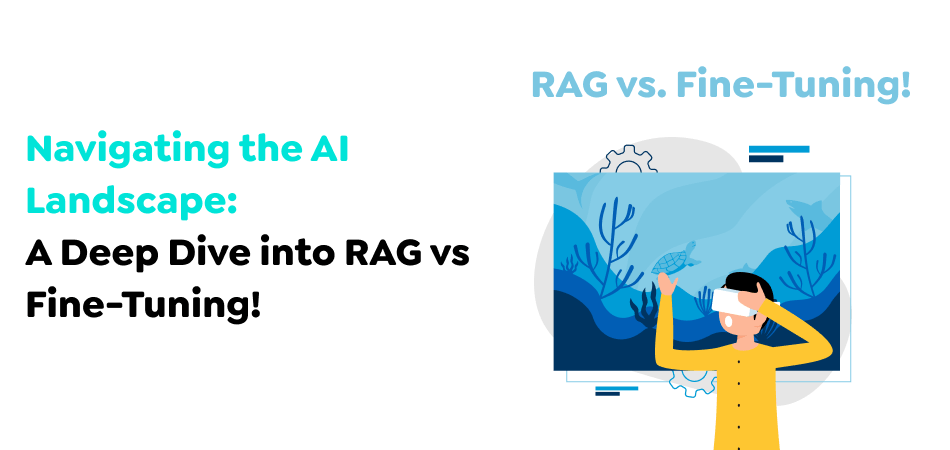
Retrieval-augmented generation (RAG) and fine-tuning are two different ways of creating and utilizing LLMs. There are a variety of factors to consider when deciding between RAG and LLM fine-tuning for your preferred LLM method of learning. These include:
In general, RAG performs exceptionally well, even in dynamic conditions. It does this because it frequently seeks the latest information from knowledge databases external to the model and does not require frequent reconstitution. The information produced by RAG-powered models is continuously up-to-date.
However, fine-tuned LLMs typically become static images of their training databases and are easily obsolete when dealing with active data. In addition, fine-tuning can’t always be accurate, as it can fail to remember the information it’s gained over time.
RAG LLMs usually depend on a mix of labeled and supervised data showing how to find and use pertinent external data. That is why models powered by RAG can easily manage both generation and retrieval.
However, those with refined LLMs are taught using an individual task-specific data set that typically includes examples with labels that correspond to the task being sought. These models can be modified to carry out diverse NLP tasks, but they aren’t specifically designed to perform information retrieval.
RAG-powered LLMs have a hybrid structure that blends a transformer-based system and an external knowledge base. This type of base enables quick retrieval of pertinent data from sources such as corporate records, basic documents, or databases.
In contrast, LLM fine-tuning often begins using an already-trained LLM that has been further refined for a particular task. The majority of the time, this design remains the same, and only minor adjustments are made to the LLM’s weights and parameters to boost its efficiency in performing the job.
RAG models focus primarily on retrieving information and might not instantly adapt their language style or specification in response to data gathered from an external source. This LLM training method effectively takes in relevant external information but might not fully tailor the writing style or behavior.
On one hand, fine-tuning lets you alter the LLM’s behavior specific to the domain, knowledge, and writing style to conform to particular terminologies, nuances, or tones. Fine-tuning completely modifies the model of the writing style or domains.
The general rule is that RAG is more resistant to illusions and biases because it bases every response produced by an LLM on evidence or documents that have been retrieved. As it creates data from information retrieved from the Internet, it becomes difficult to create fake responses because of the limited available training data.
On the contrary, fine-tuning processes could reduce hallucinations’ likelihood by focusing on data specific to the domain. But, even fine-tuned models will still produce incorrect responses when confronted with unrelated questions.
Though RAG excels at generating current responses, reducing the possibility of hallucinations. However, its accuracy will vary according to the specific task or area being performed. It is focused on improving the model’s understanding of its domain, which can result in better predictions and responses.
RAG provides more clarity by breaking down response generation into various steps, which provides valuable data regarding data retrieval and increases users’ trust in the outputs. However, fine-tuning works as a dark box, making it difficult to understand the logic that drives its actions.
RAG requires less data labeling and resources than fine-tuning the process, which makes it more affordable. The majority of RAG expenditures are typically devoted to creating embedding and retrieval platforms.
However, fine-tuning demands higher-quality labeled data, significant computational power, and modern technology like GPUs with high performance or TPUs. This means that the total cost of tuning is significantly more expensive than RAG.
RAG is comparatively less complicated since it requires only the ability to code and architecture skills. The fine-tuning process, in contrast, is a bit more difficult since it requires a thorough comprehension of NLP deep learning, modeling configuration, data reprocessing, and evaluation.
Also Read : Unleashing the Power of AI: Transforming Software Development with Machine Learning
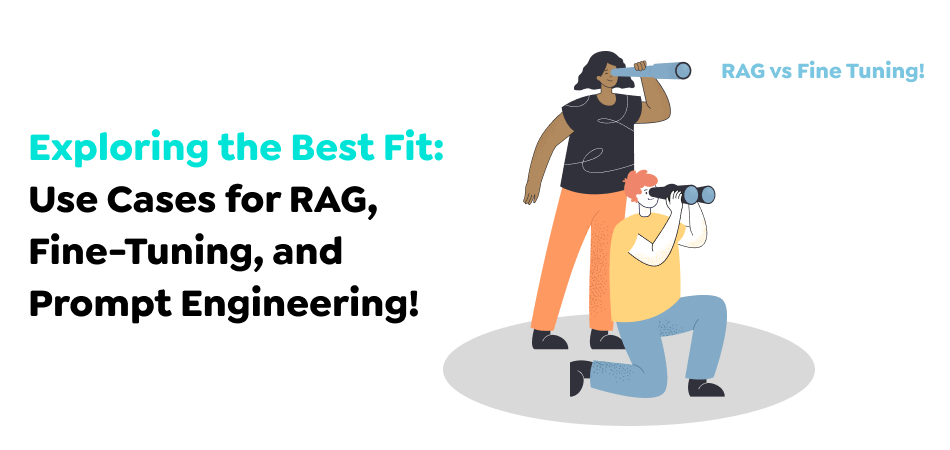
To fully realize the potential of LLMs, we must offer clear guidelines in the form of prompts to unlock the power of LLMs. An LLM prompt contains text which tells the model the type of response it should create. It serves as a starting place, providing an understanding of the situation and guiding the LLM to the intended outcome.
To use your LLM optimally, be aware of the difference between RAG and the fine-tuning process versus prompt engineering. Which one is best depends on the particular requirements of the specific use case.
In the end, the decision to choose between fine-tuning and RAG or prompt engineering boils down to carefully weighing various aspects, including the desired result in terms of resources and the type of information.
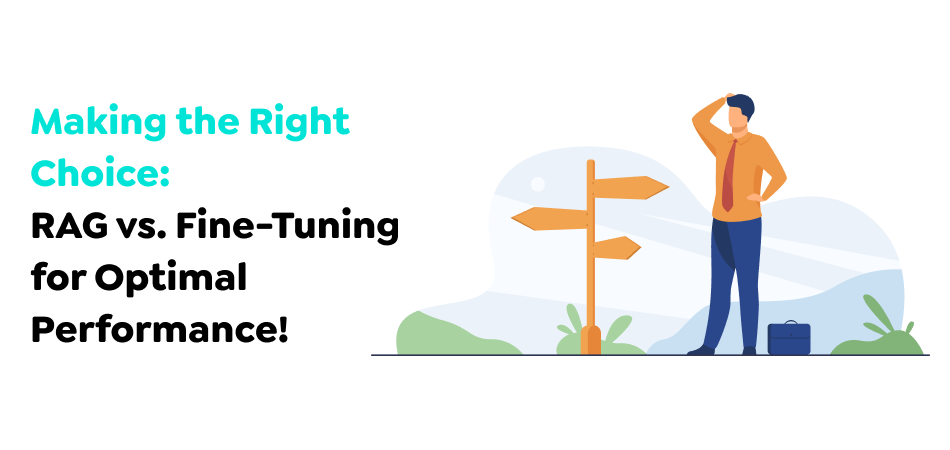
Each approach has its own pros and cons so that the decision will depend on your project’s demands. As a trusted AI application development, below we will present a few points on how you to gain more clarity on your goal:
Start by thoroughly analyzing the issue to identify the essential parameters required to find a solution. For example, consider whether the issue requires using vast amounts of external data (suited to RAG) or a more thorough, precise understanding of a more limited set of data (suited to fine-tuning).
Fine-tuning is best if there is a large, detailed, well-labeled data set related to the task you’re trying to accomplish. RAG performs best when you’ve got lots of data that is not structured but has outside knowledge. This makes it the perfect tool for projects with limited or costly task-specific data.
Implementing RAG is simpler because it requires only architectural and coding skills. For fine-tuning, you need a wider set of skills, which includes Natural Language Processing (NLP), deep learning, modeling configuration, data reprocessing, and assessment.
The fine-tuning process can give more control over particular task-related enhancements; however, it may be unable to cope with the more extensive knowledge adaptation. Although powerful at using external information, RAG depends on the knowledge base’s quality and availability.
RAG and fine-tuning require team skills. Although it is now more efficient to refine models, it still requires a significant amount of knowledge in machine learning and data processing. RAG, However, requires knowledge of information retrieval vector databases and maybe more intricate systems integration.
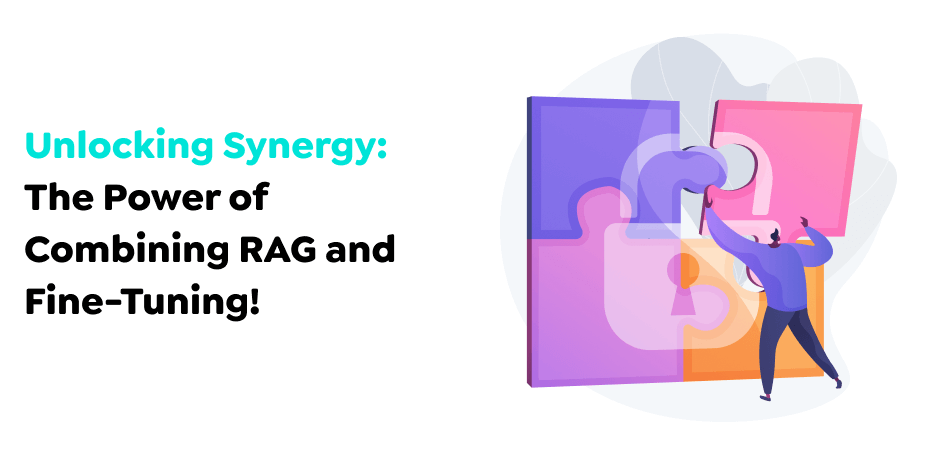
Recent studies have introduced Retrieval-Augmented Fine-Tuning (RAFT). This technique prepares large language models to become more specific in specific areas and enhances their capacity to use relevant information to help answer questions.
The method is frequently used to prepare for an open-book exam in which you can access resources from outside; however, you also know precisely which topics or resources to refer to. When confronted with questions and multiple documents, the candidate will be instructed to avoid all documents that do not help to answer the question and focus exclusively on relevant documents.
The RAFT technique involves creating the information for training in a manner that resembles the “open-book” setting. This is a brief overview of the method:
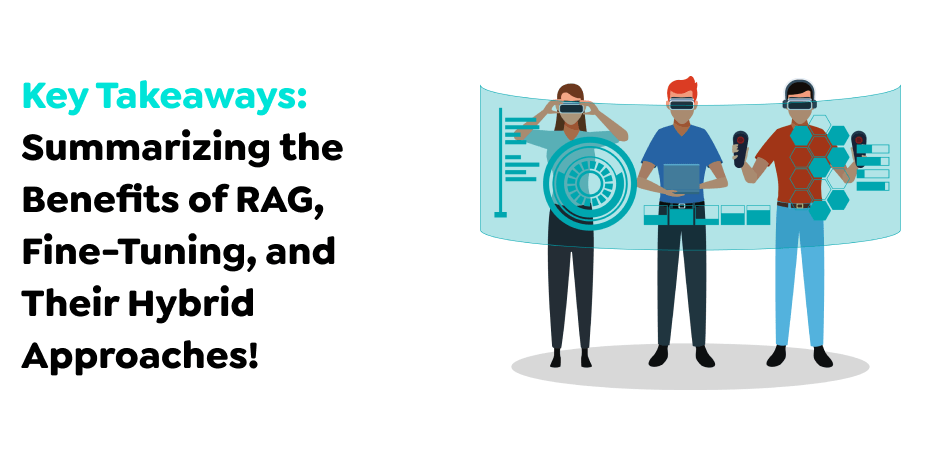
The Retrieval Augmented Generation (RAG) and the LLM Fine-Tuning models have significant value for specific fields and industries. They’re equipped to manage users’ most complex queries and customize responses according to particular contexts and nuances unique to the domain. Combining the advantages of RAGs’ ability and the more prominent language models that fine-tune their comprehension of the specific language of the environment, users can get exact and thorough responses to questions.
Combining these two could prove practical, providing a more pleasant user experience while addressing the specific and complex requirements of particular industry inquiries. This method allows you to surpass each of the limitations inherent to these models. It also provides expertise for situations that require extensive access to specialized data or a comprehension of specific terminology.
For more insights and tailored solutions in AI and language model optimization, feel free to get in touch with Techugo today!
Write Us
sales@techugo.comOr fill this form